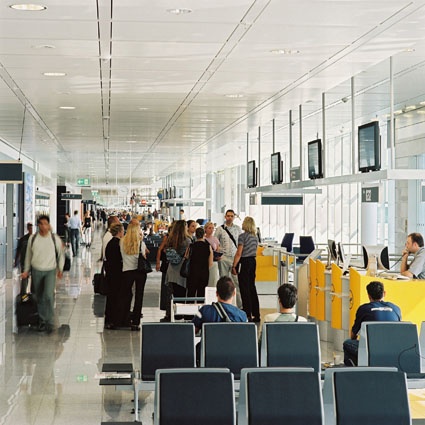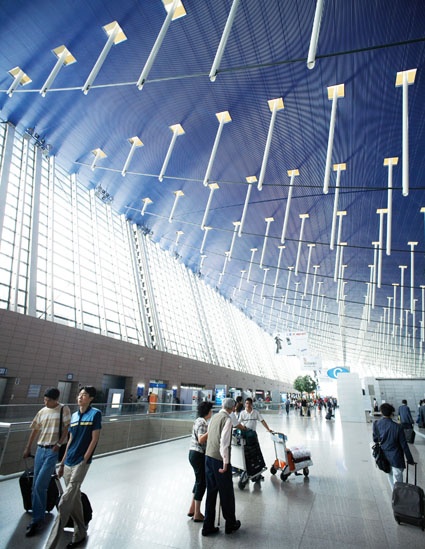More Security through Integration
Great importance has always been attributed to flight safety, however, after 9/11 the requirements of airport operators and airlines have significantly been raised. Also, recent de...


Great importance has always been attributed to flight safety, however, after 9/11 the requirements of airport operators and airlines have significantly been raised. Also, recent developments such as the discovery of suspect packages in cargo areas have proven that the danger of terrorism is still very prevalent. In order to ensure the safety of passengers, in-flight crews and members of the ground staff, airport operators do not only need complex security technology but also an integrated and intelligent threat management system.
In addition, in most countries operators have to comply with specific legal regulations. As an example, the German air safety law obligates airport operators to "... ensure that airport grounds, buildings, areas and facilities are constructed and designed in such a way that the necessary structural and technical security and the appropriate implementation of the personnel security and protection measures, as well as the control of the areas not accessible to the general public, are maintained." Even the airlines are obligated to implement comprehensive security measures. Although the law only specifically refers to the necessity for a comprehensive video surveillance and effective access control system, fire protection and evacuation technologies also play an important role at airports. High fire loads such as cable networks, comprehensive technical facilities and equipment, non-visible baggage as well as the nonchalance of passengers, visitors or employees all lead to continuous fire hazards; of course bomb scares can also necessitate an airport evacuation at any time.
Linked Together: Fire Protection and Evacuation
Today, fire protection and evacuation are so closely linked that the advantages of integrating them into a common, centralized control center are evident. For this reason, the airport in Bratislava (Slovakia) has several networked fire detection control units made by Bosch and connected to a Praesideo Public Address System via the Building Integration System (BIS). This enables the fire detector's alarm to trigger, either immediately or after alarm verification, automatic announcements into the jeopardized area. If video surveillance is also integrated into this type of control center, security can be increased dramatically. Potential fire hazards and blocked emergency exists can then be recognized at an early stage. In this way, the operations controllers have the opportunity to manage an evacuation in a way that best fits the current overall situation. This "real-time ability" through integration of video surveillance can, in case of emergency, save lives and avoids long-term operational shutdowns.
Creates a Security Plus: The Combination of Access Control and Video
Further synergies are created by the integration of video surveillance with access control as well as intrusion detection systems. Modern access control systems based on chip cards allow an efficient management of access authorizations, but without any additional control instruments they are generally powerless against abuse. That's why at airports these types of systems are generally used in conjunction with isolating devices and biometric features. Beyond this, all critical access points should be additionally monitored with video cameras.
This enables the operator to receive card data as well as video images simultaneously on his or her monitor whenever an unauthorized access attempt is discovered. For certainty of identification, the picture from the identification camera can also be shown next to an archived photograph of the employee. In cases of a match, the operating personnel will be able to release the door manually; in other instances access will be denied and the security personnel will be alarmed. If no employee isolating device is installed, even the moving through of additional people can be reliably prevented.
An additional area of use of the integrated video surveillance is alarm verification. If an alarm is set-off at a door, for example because the door has been left open too long or because the incorrect access data has been entered, then an image of the corresponding location is immediately displayed on the user's screen; the image can simultaneously be recorded with a connected hybrid/network recorder. Additionally, archive videos - that have been allocated to each alarm - can be superimposed. In this fashion, even intrusion detection can be efficiently supported by video cameras that transmit their images directly to the airport's security headquarters.
More Security and Efficient Operation
The integration of all security-technical systems into an overriding management system is appropriate in order to significantly increase the level of security in an airport. It opens the possibility to automatically correlate alarms and other information from the individual subsystems and, if required, to very quickly take targeted measures as well as to be able to react to dangerous situations or incidents. Additionally, central management is primarily responsible for ensuring that such a complex installation can be operated both efficiently and economically. After all, on a daily basis thousands of notifications and alarms from all security areas and technological facilities need to be managed and coordinated. In a centralized hazard management system, all incoming notifications from connected subsystems are summarized, visualized and processed on a uniform user interface. In this way, for example, Building Integration System (BIS) from Bosch supports the centralized administration of:
- Fire detection
- Tank shutdown systems
- Intrusion detection
- Video surveillance systems (CCTV)
- Access control systems
- Surveillance of the exterior grounds
- Management of delivery doors, gates, parking garages and parking areas
- Dynamic allocation of alarm and image
- Emergency exit control
- Intercom system
- Public Address system
- Video management and employee video verification
- Employee database and access authorization
- Elevator control
The Building Integration System offers the operator a complete overview of all subsystems, all centralized areas and even the status of individual detectors. Thereby it is ensured that the proper reaction to notification and alarms occurs and these are acknowledged. In addition, the operator can define escalation procedures, for example if a user does not immediately respond to an alarm.
The central management systems are simplified through the increasing use of classic network technology such as Ethernet and IP, so that a common and, in addition, cost-efficient technical platform is available to all areas of security technology. Information transmitted by video cameras, fire and smoke detector or door controls can be combined via uniform protocols such as TCP/IP and standardized interfaces like OPC. This even allows for the integration of third party subsystems in building and security technologies.
most read


GIT SECURITY AWARD 2026 - The winners have been announced!
GIT SECURITY AWARD 2026: The best safety and security solutions of the year - now an overview of all winners

Machine & plant safety: The winners of category A at the GIT SECURITY AWARD 2026
GIT SECURITY AWARD 2026: Machine & plant safety - an overview of the most innovative solutions


Is Your Venue Ready for Martyn’s Law?
Martyn’s Law demands stronger security by 2027. Is your venue prepared to protect and respond?








